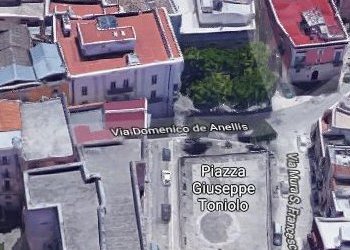THE DIOCESE OF ANDRIA
The history of the diocese of Andria is strictly intertwined with the history of Andria itself. The city is referred to for the first time in ancient texts as locus Andre, a hamlet with a church that was ruled by an archpriest under the jurisdiction of the bishop of Trani as early as the 9th-10th centuries, as proved by the current pre-Norman crypt of the Cathedral (originally a church on the ground level).
There is no certain information about an episcopal presence after the town became an autonomous civitas and a Norman county in 1073, at least until the 12th century, that is when documents refer to two bishops, Leon and Richard, the latter being an English priest who ruled for 40 years the diocese earning soon fame of sanctity.
The construction in the Swabian Age of Castel del Monte and the burial of Frederick II's two wives in the crypt of the cathedral document the relationship between the city and the Swabian house.
Under the Angevins, who took over the city after the Swabian rule, the cathedral of Andria received by Beatrice of Anjou, duke Bertrando Del Balzo's wife, the Holy Spine of Christ's Crown as a dowry. During the Del Balzo rule, in 1398, the Dominicans settled in Andria building the forth -largest convent after the Franciscans convent (current City Hall), the convent of the observant Franciscans devoted to Santa Maria Vetere and that of the Augustinians. In 1431 the dukedom was passed on to Francis II. He was responsible for the discovery of the body of Saint Richard, who, after the revival of his worship, was recognized as the Patron of the city.
With the advent of the Spanish in the Kingdom of Naples Andria was taken over by the Carafa, counts of Ruvo.
The continuing struggles between the Carafa family and the bishops of the town over political and economic power marked the history of Andria until the end of the 1700s while Andria expanded beyond its walls especially thanks to the presence of important conventual units. There are several events of this period that are worth mentioning: the construction of the imposing convent of the Benedictines in piazza Duomo in 1563 (demolished during the Fascist period), which aimed at the education of the noble girls of Andria; the discovery in 1563 of the image of the Virgin of Miracles and the erection of the homonymous basilica and of Benedictine convent; the construction of the sanctuary of Santa Maria dell'Altomare after the miraculous discovery of another image of the Virgin.
The events that occured between the 18th and the 19th centuries were particularly dramatic for Andria due to the arrival of the French army and the bloody and destructive French siege.
When the Bourbons got back to Naples, after the short kingdom of Joachim Murat, Canosa and Minervino were combined with the diocese of Andria.
The 19th century contributed to a strong pastoral reorganization of the diocese with the institutions of new parishes, above all during the episcopates of the bishops Domenico Bolognese (1822-1830), Giuseppe Cosenza (1832-1850) and Giovanni Giuseppe Longobardi (1852-1870).
The diocese of Andria currently combines three previous dioceses: the diocese of Andria, the diocese of Canosa of Apulia and the diocese of Minervino Murge.
The diocese of Andria currently combines three previous dioceses: the diocese of Andria, the diocese of Canosa of Apulia and the diocese of Minervino Murge.

Address: via De Anellis n. 48, angolo piazza Toniolo 5, 6, 7, 8.
Phone: +39 0883593382
Email: museodiocesano@diocesiandria.org
Andria diocese's web address



